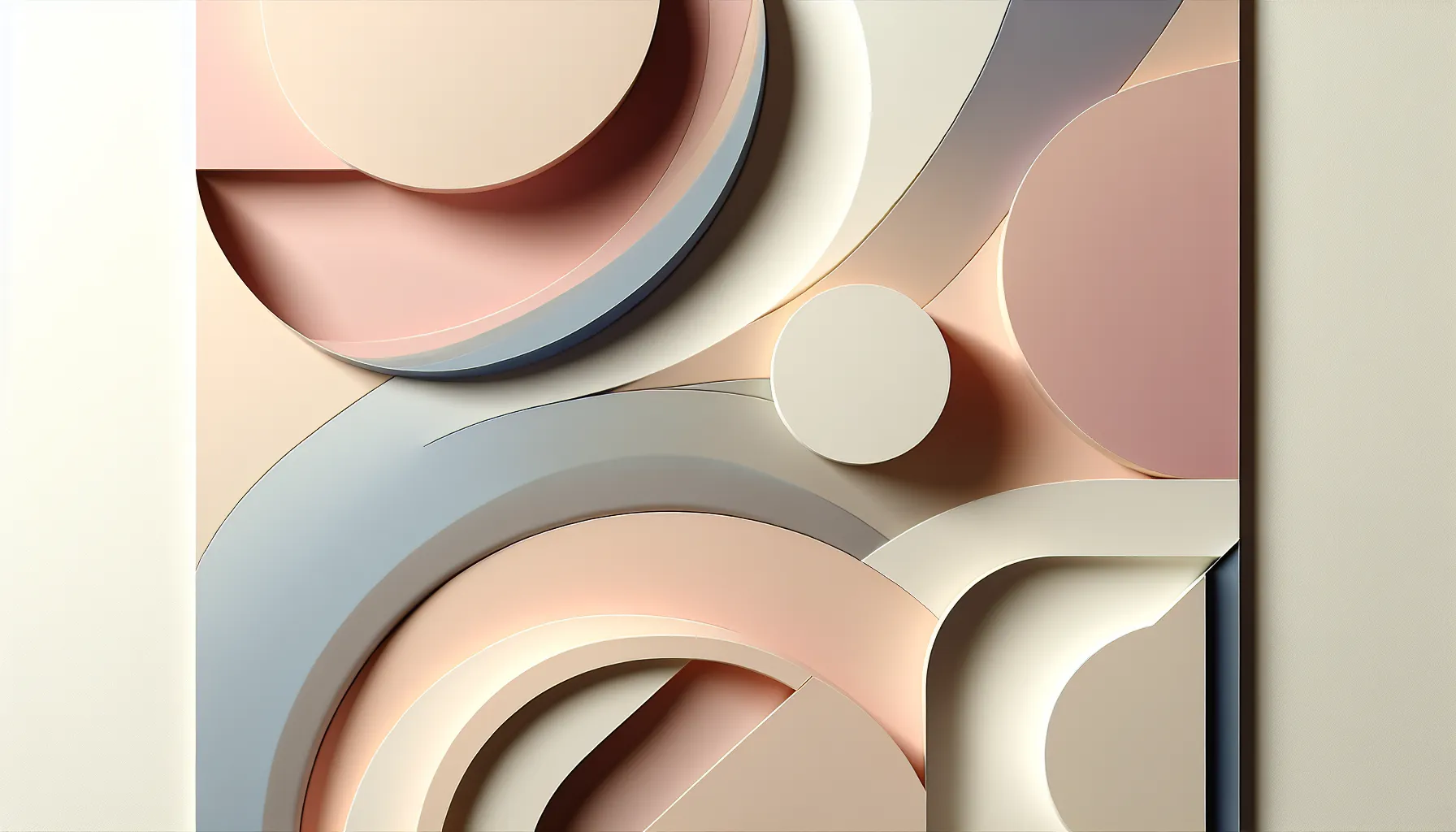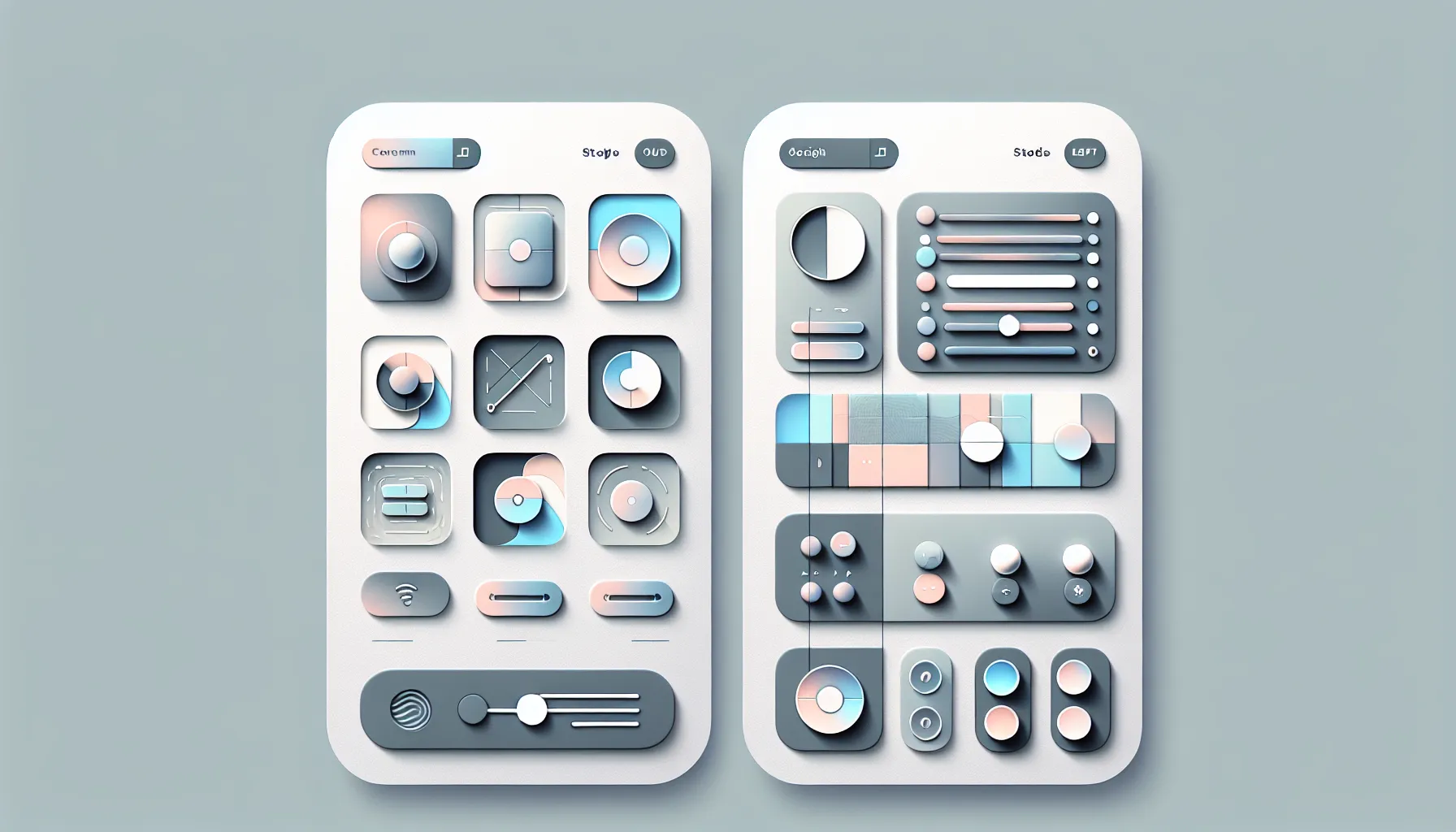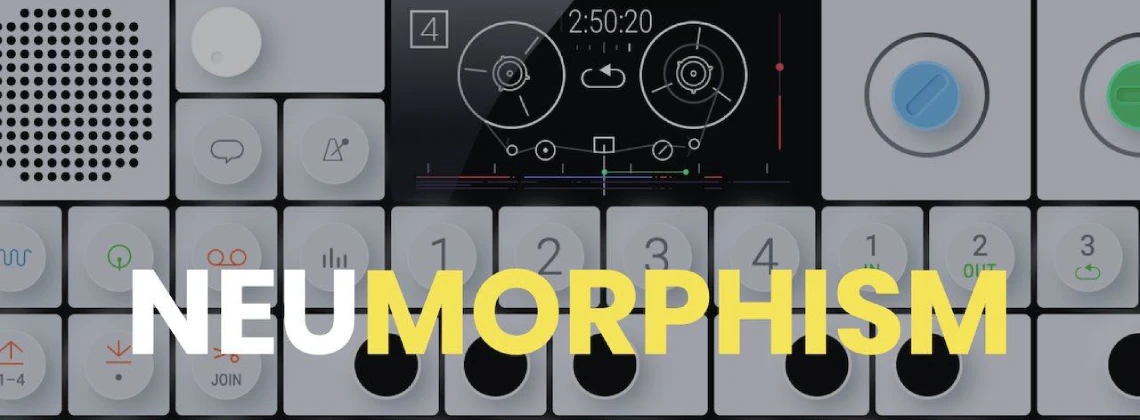Neomorphism uniquely combines elements of skeuomorphism and minimalism, creating interfaces that exude softness and almost three-dimensionality. This style, characterized by subtle shadows, reflections and a delicate color scheme, allows elements to create the illusion of standing out or cutting into the background, giving them a tactile feelings
"Neomorphism breathes new life into interface design, prompting us to rethink the way we interact with the digital world," the prominent UI/UX designer emphasizes.
The growing popularity of this trend among designers is due to its ability to harmoniously combine the familiar with the new, creating visual effects that are both innovative and intuitive. However, potential accessibility challenges must be kept in mind, as neomorphism may face contrast issues. This obliges designers to be extremely careful when creating interfaces to ensure not only aesthetic appeal, but also convenience for users.
History and evolution of neomorphism
Neomorphism, which recently caused a significant resonance in the world of interface design, has its roots in the already known skeuomorphism. Skeuomorphism was popular around the turn of the century, when digital interfaces attempted to mimic the real world by using detailed textures and shadows to give users a sense of familiarity with the latest technology. However, over time, skeuomorphism began to give preference to flat design — a style that was distinguished by simplicity, clean lines and the absence of bulky elements. This direction indicated the desire of designers to simplify interfaces and focus on their functionality.
However, neomorphism emerged as a reaction to the over-simplicity of flat design, offering a new approach that uses subtle shadows and translucent colors to create the impression of volume and tactility. It resonated with designers looking to add depth and realism to digital products.
| Year |
Style |
Description |
| 2000s |
Skeuomorphism |
The use of textures and shadows to imitate real materials. |
| 2010s |
Flat design |
Simplicity, clean lines, lack of bulky elements. |
| 2020s |
Neomorphism |
Volume, thin shadows, translucency. |
Neomorphism certainly opened a new chapter in the history of UI/UX design, establishing positions that convincingly connect the past and the future.
Continue to the next section to learn about the key principles and elements that make neomorphism unique in the world of design.

Basic principles and elements of neomorphism
Neomorphism is a design style born on the border of skepomorphism and minimalism, which is especially attractive with its characteristic features. The use of neomorphism requires a balanced approach to the choice of color scheme and textures in order to achieve the effect of tenderness and volume, which is a key feature of this style. Here are the key elements that make up neomorphic design:
- Color palette: Mostly consists of neutral or soft shades that allow shadows and highlights to show without distracting from the main composition.
- Gradients: Used to create the illusion of depth and volume, adding realism and smoothness to transitions.
- Shadows: A critical element of neomorphism, used to create the impression that elements rise above or, conversely, sink into the surface.
- Glares: Create the illusion of interaction with light and contribute to the formation of a sense of tactility.
Neomorphic style requires designers to pay special attention to details because well-chosen elements not only enrich the visual appeal but also contribute to the intuitiveness of the interface. At the same time, it is necessary to remember about accessibility, since the excessive use of shadows and reflections can make it difficult to understand the content.
Neomorphism fascinates with its ability to imitate real materials and textures in the digital space, opening a new level of interaction with the user. This design style not only impresses with freshness and originality but also demonstrates how technology can be used to create a deeper emotional and tactile experience of interaction.
Examples of the use of neomorphism in UI/UX design
Neomorphism in UI/UX design opens up new facets of user interaction with the interface, offering tangible depth and tactile sensations. This style is gaining popularity among designers who want to bring freshness and novelty to familiar digital visual schemes. The main tools of neomorphism are detailed shadows and reflections that create the illusion of the convexity of the interface elements on the screen.
The use of neomorphism can be seen in a variety of applications, from music players to fitness trackers. It brings elegance to interfaces, allowing users to feel every control as if they were touching real objects. This approach provides not only aesthetic satisfaction, but also convenience and intuitive use.
However, it is worth noting that neomorphism requires designers to have a high level of skill and a deep understanding of both visual principles and technical aspects of design implementation. For example, contrast and readability must be taken into account so that the interface is accessible to all users, including people with visual impairments.
Thanks to its uniqueness and visually appealing simplicity, neomorphism continues to find acceptance in the design community, opening new horizons of application in the digital world.

Advantages and disadvantages of neomorphism
First, let's look at the pros and cons of neomorphism to understand its impact on user experience and accessibility. Here are the key aspects:
Advantages:
- Modernity: Neomorphism reflects the latest trends in design, giving products a fresh and up-to-date look.
- Intuitiveness: Due to the similarity to real objects, the design is often comprehensible to users on an intuitive level.
- Harmony with the interface: Design elements fit harmoniously into the overall interface, creating a sense of integrity.
- Creative possibilities: Neomorphism gives designers room for creativity in the use of light and shadows.
Disadvantages:
- Accessibility: Poor contrast and dependence on visual nuances can make it difficult for people with limited vision.
- Color restrictions: A monochromatic palette can reduce opportunities for design expression. Implementation
- Difficulties: Implementing a neomorphic design can be challenging, especially for low-resolution displays.
Considering these advantages and disadvantages, designers should carefully determine whether neomorphism is the optimal solution for their projects, based on the needs of the target audience and the specifics of the application.
Frequently asked questions about neomorphism
What is neomorphism in design?
Neomorphism in design is a modern style of interfaces that harmoniously combines the background with control elements, creating the illusion of indented or overhanging objects. The use of soft shadows and translucent colors allows you to achieve the effect of three-dimensionality and tactile sensibility.
How does neomorphism affect modern design?
Neomorphism revolutionized modern design, offering a fresh look at interfaces. It introduces elements of realism through shadows and volume, enriching the user experience and visual perception.
What are the main features of neomorphism?
The main features of neomorphism are soft shadows, translucent colors and subtle gradients, which create the illusion of sophisticated elegance and volume of interface elements.
Why did neomorphism become popular among designers?
Neomorphism has gained popularity among designers due to its innovative approach to creating interfaces that mimic realistic materials. This style offers a unique interaction with the user through delicate shadows and a sense of depth.
What are the advantages and disadvantages of neomorphism?
Neomorphism is distinguished by its aesthetic advantages, creating an intuitive and attractive interface. However, its drawbacks include certain accessibility challenges, especially for people with low vision.







